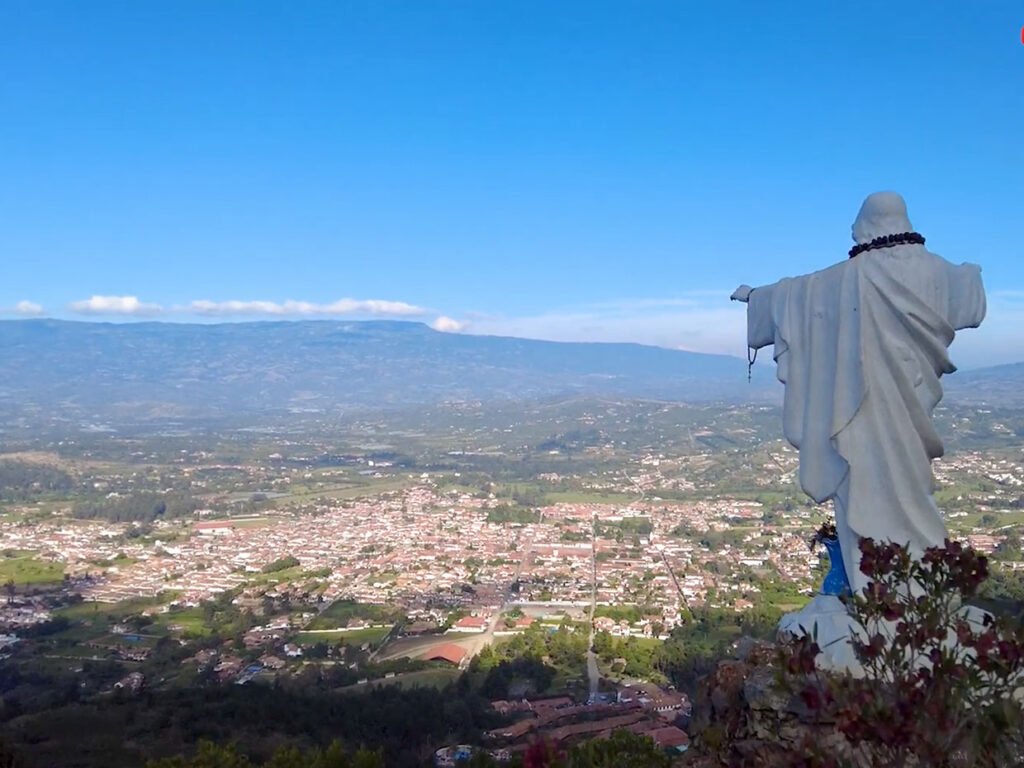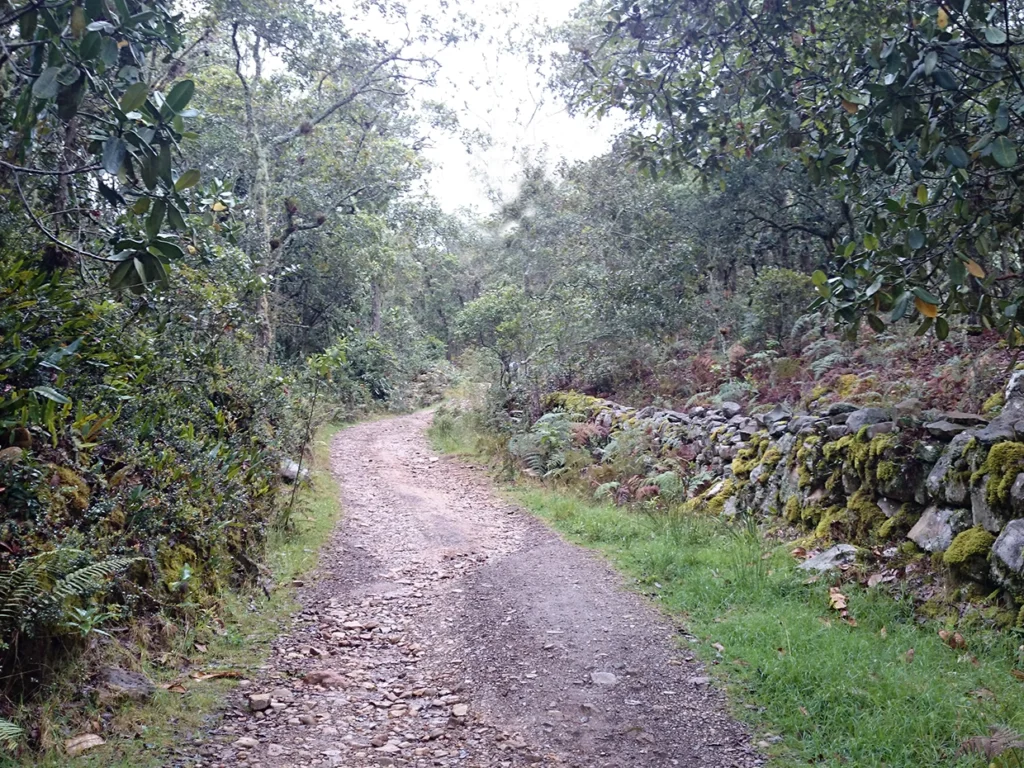Villa de Leyva is one of the most charming and visited destinations in Colombia, and there are several reasons why it is a very interesting place to visit. This town, which seems to be frozen in time, has a unique combination of natural beauty, colonial architecture and a rich history. Here are some of the reasons why it is so special.
Colonial architecture
In our opinion, what makes Villa de Leyva such a charming place are its white houses with wooden balconies, red roofs and cobblestone streets. The town looks like something out of a painting, with architecture that has remained intact over time.
The Plaza Mayor is one of the largest in Colombia, and is perceived as a huge public space surrounded by historic buildings, such as the Parish Church and the Casas Consistoriales. The colonial houses, with their wooden balconies, interior patios and tile roofs, are examples of traditional Spanish architecture adapted to the local context.
In the period of Colombia’s Independence, Villa de Leyva played an important role. The village was the scene of important events and battles that contributed to the struggle for independence. Some of the most prominent independence leaders visited Villa de Leyva, and the village became a center of political and military activity.
If you visit it you can’t miss…
1. Plaza Mayor
With its 14,000 square meters, it is, as mentioned above, one of the largest squares in Colombia, surrounded by colonial buildings. It is the center of town life, where you can enjoy the tranquility, stroll, have a coffee or enjoy cultural events. In addition, the atmosphere in this space is magical, with views of the nearby mountains.

2. Church of Nuestra Señora del Rosario
It is a construction dating from the seventeenth century and is located on the western side of the square with its typical design of the religious architecture of the time. It is not only a place of worship, but also a historical space that reflects the cultural and spiritual legacy of the municipality. This iconic colonial style church stands out for its adobe façade and clay tiles, elements that evoke the authenticity and simplicity of that era.
Inside, the ornamental details include delicate wood carved altars, evocative religious paintings and a serene atmosphere that invites reflection.
The sturdy pillars and exposed brick vaults add a rustic nuance that enhances the spiritual beauty of this sacred place.

3. House of the First Congress of the United Provinces of New Granada
It is on one of the corners of the Plaza Mayor and unfortunately when we were in the city could not be visited because it was under restoration.
It is the house where in 1812 the first laws of Colombia as a republic were drafted after the cry for Independence, during the First Congress of the United Provinces of New Granada. That is why it is considered by many historians and scholars as the place where the Republic of Colombia was born. It was here that such important historical figures as Antonio Nariño, Simón Bolívar and Camilo Torres performed their duties.
The house houses murals created by the master Luis Alberto Acuña, which present legends related to the indigenous times, the conquest and the founding of Villa de Leyva. Today, the second floor of this building is the headquarters of the Municipal Council, while the second floor houses a gallery that exhibits the works of local artists.
4. Antonio Nariño Museum
The house is a jewel of colonial architecture declared of National Cultural Interest in 1961. It was built in the seventeenth century and was the residence of Antonio Nariño, who was a precursor of Independence,
The Antonio Nariño House Museum of the Ministry of Culture preserves documents and objects of the nineteenth century that can be seen in its rooms spreading the historical memory of Colombia, the life of Antonio Nariño and his work.
It offers a guided tour, as well as workshops, conferences, gatherings, temporary exhibitions, specialized exhibits and a permanent exhibition.
The house is another example of the Spanish architectural style of regions such as Extremadura and Andalusia, although with local construction practices and materials. It is a two-story building with a balcony, a central courtyard and a lot in the back that was used for growing food crops (such as corn, beans, cassava and bananas).

5. Santo Corazón de Jesús viewpoint
From there you can have a panoramic view of the city. You can walk from the historic center – also by car, of course, but if your idea is an active hike you will get to a portico and then… the climb begins. As a trekking it is easy but the rocky ground forces you to be reasonably fit.
From the top you can appreciate the colonial urban layout typical of so many cities in America with its marked orthogonality.

Convent of the Holy Ecce Homo
It is a seventeenth century Dominican convent located on the outskirts of town, more precisely 8 km away, in a quiet place, surrounded by nature that is perfect for a relaxing visit.
The convent has an impressive panoramic view of Villa de Leyva and the Ubaté Valley.

El Fosil Community Museum
It is a museum that was born from an important discovery: a fossil of a marine reptile (Kronosaurus), dating from 110 to 115 million years ago, made by local farmers led by biologists Enrique and German Suvieta.
The museum is a fascinating stop for paleontology lovers and offers a unique insight into the natural history of the region.
We share the link to the Museum’s website.
Iguaque Natural Park
Just a few kilometers from Villa de Leyva is the Iguaque Natural Park, an ideal place for ecotourism and hiking enthusiasts. In this park is the Iguaque Lagoon, a sacred place for the indigenous Muisca communities. The hike to the lagoon is about 3-4 hours and offers spectacular views of the Andean landscapes and great biodiversity.


Villa de Leyva Astronomical Observatory
Villa de Leyva is known for its clear sky and free of light pollution, which makes it an excellent place for astronomical observation. The Villa de Leyva Astronomical Observatory offers activities and events related to astronomy, such as observation nights, where you can see the stars and planets with professional telescopes.
Pozos Azules
It is a place for a nice walk in a natural environment, although we warn that the wells are artificially created.
As it is not a public park so if you visit it you must take into account that there is an entrance fee.

La Periquera Ecological Park
There is an entrance fee to tour the park which has some steep segments, but it is a short and relatively easy hike. There are also organized tours. The scenery is spectacular.

La Periquera cascades
Terracotta House
The Terracotta House was built using only natural resources from the surrounding area. It was designed by architect Octavio Mendoza Morales who is its owner and a prominent environmental activist known for his use of unconventional building materials. Inside it is not possible to find a single gram of concrete or steel.
For more information, we leave you their website.

Events and cultural festivals
Villa de Leyva is an ideal place to visit at any time of the year. However, it is always advisable to note some festivals on the calendar. Some of the best known are the Festival of Lights, the International Film Festival, and the Flower Fair, among others. These events attract tourists and locals, and give the town a festive and dynamic vibe…
How to get from Bogota?
BY BUS: It takes approximately 3 hours.

Villa de Leyva is a destination that combines history, nature, culture and a tranquil atmosphere, making it an ideal place for those seeking an authentic and relaxing experience in Colombia. If you are attracted to charming villages, colonial architecture, breathtaking nature and the chance to learn about the history of the region, Villa de Leyva is definitely a must-see destination.


